Gamification has become a powerful tool for transforming ordinary websites into engaging, interactive experiences. By adding elements like points, badges, challenges, and rewards, you can turn passive browsing into active participation, keeping users more invested in your brand.
Contents
However, without a well-thought-out strategy, gamification can quickly backfire.
Simply adding game-like features isn't enough – there needs to be a clear purpose and alignment with your business goals. A strategic approach ensures that gamification not only enhances the user experience but also drives meaningful engagement and results.
In this blog, we'll learn effective gamification strategies and discover real-world case studies demonstrating how these tactics can transform user interactions. Whether you're looking to increase engagement, boost conversions, or build brand loyalty, website gamification can be the answer to all.
Understanding Website Gamification
Website gamification is the incorporation of game-like elements into non-gaming environments to boost user engagement, motivation, and overall experience. A strategic approach ensures gamification not only makes your website more enjoyable but also helps you achieve real business goals and stronger user engagement.
For example, if you manage an affiliate marketing program, you can gamify your site by offering points or badges to affiliates for each successful conversion lead they generate. Affiliates could earn additional rewards for reaching certain milestones, such as achieving a set number of monthly conversions.
You could also create a leaderboard to showcase top-performing affiliates, encouraging friendly competition. This will create a sense of competition among the affiliates, inspiring them to sell more.
This gamified approach would likely increase traffic on your affiliate website and greater user interaction as affiliates strive to earn rewards and improve their rankings.
Benefits of Website Gamification
If you've gotten to this point and you love what you've read so far about gamification, here're valid reasons for you to incorporate gamification elements into your website:
Increased User Time on Site
If you incorporate interactive gamification elements such as challenges, rewards, and more into your business website, you can be sure that your users will spend more time on it.
Why?
That's because people get addicted to anything that's gamified online. Most people have a curious mindset, and when they see these new additions, they want to explore them. Boom! Before you know it, they've spent over an hour engaging with your platform.
Improved User Interaction
Gamification fosters more significant user interaction by encouraging active participation rather than passive browsing. Elements such as points, leaderboards, and badges on your website can motivate your users to engage with content, complete tasks, and compete with others. These active intereactions leads to more sales and better community engagement.
Enhanced Customer Loyalty
One of the best things about gamification is that it can significantly enhance customer loyalty by creating a rewarding and enjoyable experience. When your users feel valued and recognized for their participation, they are more likely to return to your business website and continue engaging with its content.
Enhanced Data Collection and Insights
You can use gamification as a powerful tool for gathering data on user behavior and preferences. By tracking how your users interact with gamified elements, such as which challenges they complete or how often they return to your business website, you can gain valuable insights into their motivations and engagement patterns.
Higher Conversion Rates
Gamification can increase conversion rates by making the user journey more engaging and rewarding. When your users are motivated by points, badges, or progress bars, they are more likely to complete actions that lead to conversions, such as signing up for a newsletter, making purchases, or filling out a form.
General Statistics and Findings on the Benefits of Websites Gamification
- Gamifying your site can increase customer loyalty by almost 30%. Verizon Wireless proved this when it discovered that its visitors' browsing time increased by 30% after it added gamification elements to its website.
- According to a research by Gartner, 89% of individuals would spend more time on an app or website that implements game elements.
- In 2012, Samsung saw a 500% increase in customer product reviews on its website after launching Samsung Nation in collaboration with Badgeville. Samsung Nation was a social loyalty program that allowed users to earn badges for activities such as writing reviews, watching videos, and competing for rewards.
- The gamification market size is estimated at $15.43 billion in 2024 and is expected to reach $48.72 billion by 2029, growing at a CAGR of 25.85% per data from Mordor Intelligence.
Fundamental Website Gamification Elements
Now that you know the benefits of website gamification, it's time to gamify your website. But before that, we want you to get familiar with the common website gamification elements. Let's take a look at the vital game elements that are a must-have for your business website.
Points

Points are numerical values you can award to your users for completing specific actions or tasks, such as purchasing, signing up for a newsletter, or participating in a discussion. They are a form of instant feedback as they reward your users for their actions and encourage them to continue engaging with the website or platform.
Levels
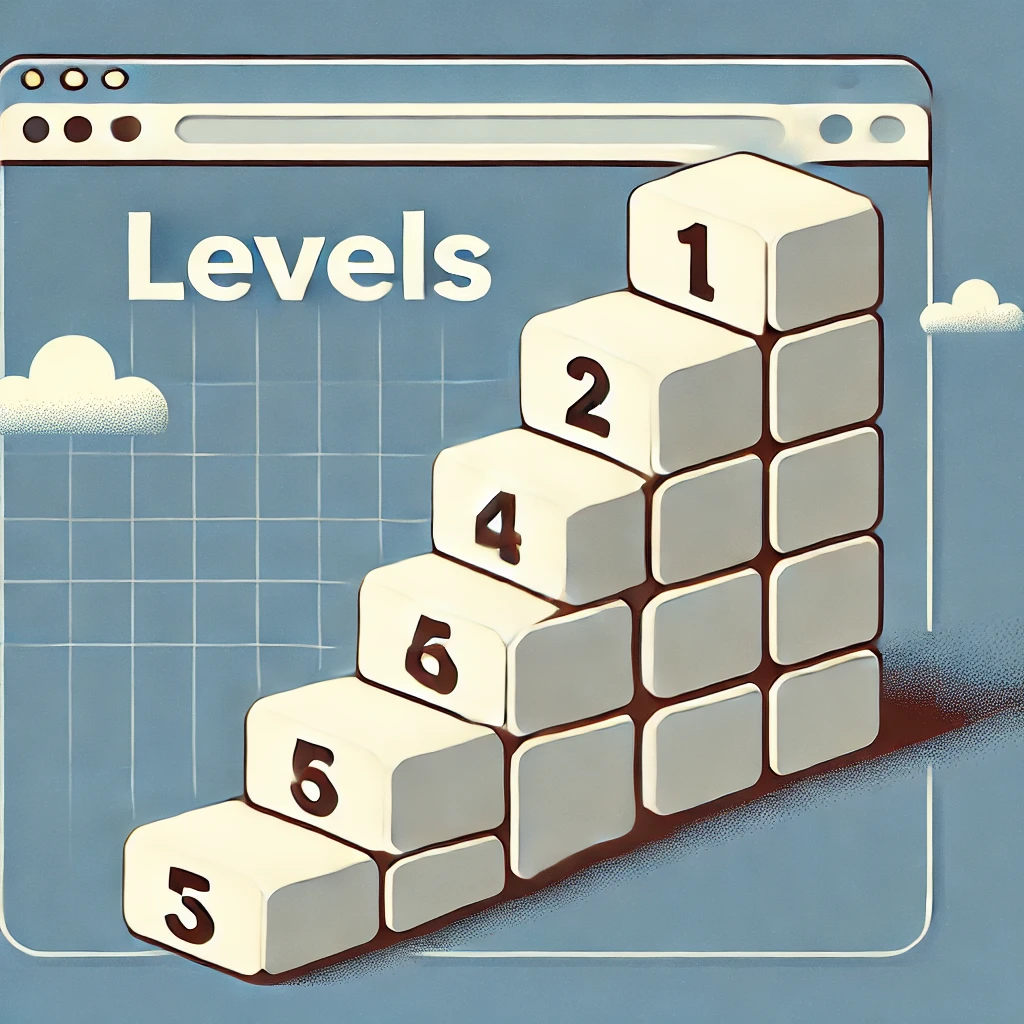
Levels are different stages of progress that your users can achieve as they accumulate points or complete tasks. They aim to provide a sense of progression and accomplishment, motivating users to keep advancing through more challenging content or actions.
Challenges
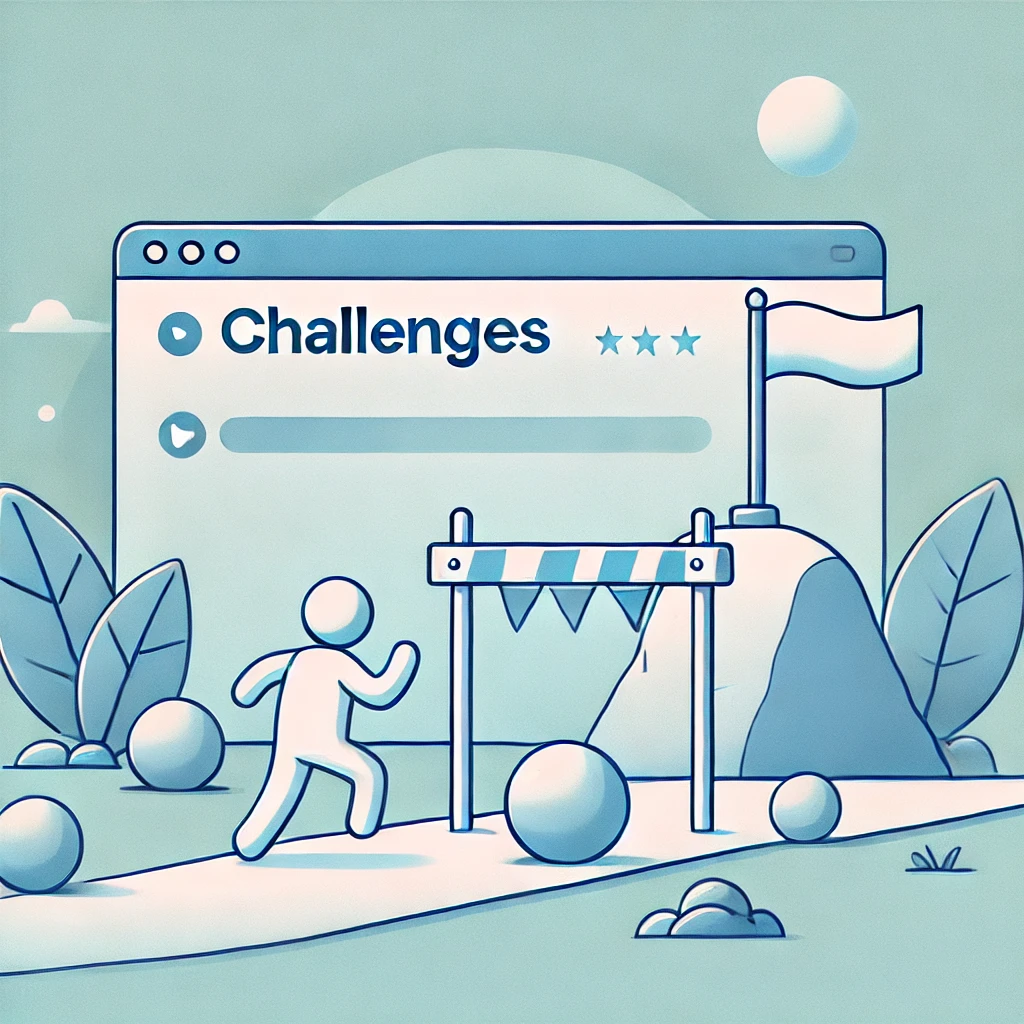
Challenges are tasks or objectives you can assign to your users to complete within a given time limit. This creates a sense of urgency and excitement, pushing them to actively participate and achieve goals, which can lead to rewards or recognition.
Leaderboards
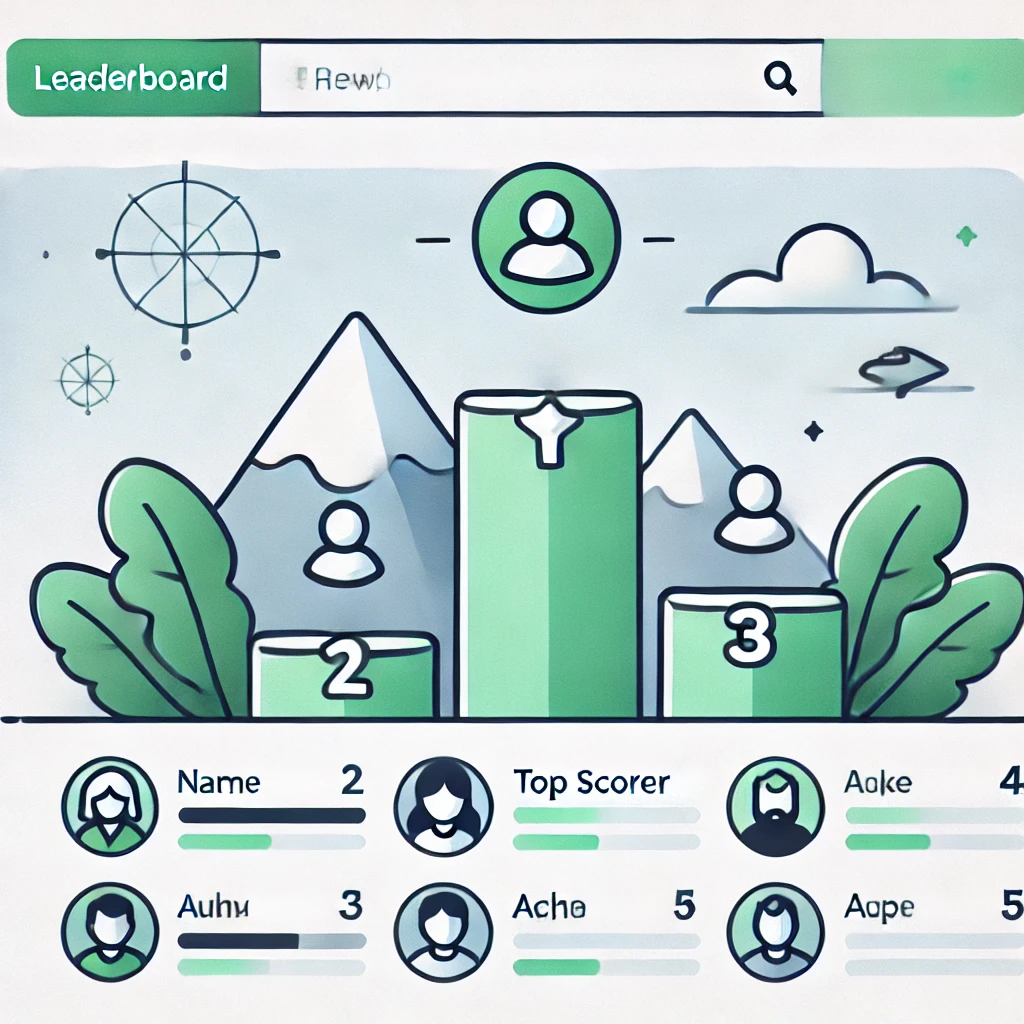
Leaderboards display your users' rankings based on their performance, such as points earned or challenges completed, often comparing them to other users.With leaderboards, you can imbibe in your users the spirit of competition, motivating them to improve their performance and climb the ranks, thereby driving increased engagement and participation.
Badges
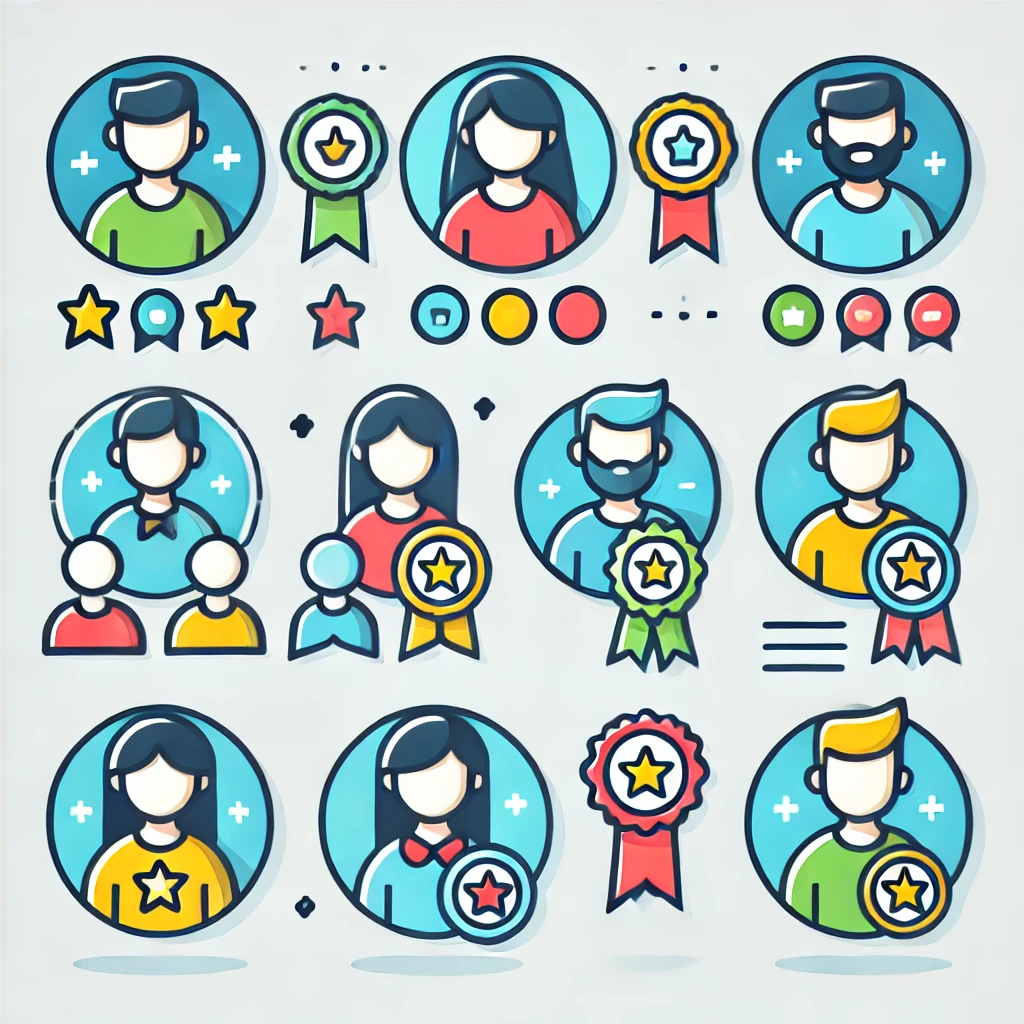
Badges are visual symbols or icons awarded to users for completing specific tasks, achieving milestones, or demonstrating particular behaviors. They are a form of recognition and status that your users can use to give themselves a sense of accomplishment. They can also foster a sense of pride and competition as users strive to earn and display badges on their profiles or dashboards.
Psychological Appeal of Gamification for Websites Visitors
It’s no surprise that as humans we have a natural desire to be in control and to succeed in our endeavors. Games are designed with this in mind, as they are built to tap into our subconscious and give us that feeling of hunger and desire for achievement.
Studies have even shown that gamification elevates our task performance by boosting our inherent qualities for motivation, competition, and social connectivity, making us perceive tasks as rewarding and enjoyable.
Having said these, let’s take a look at the psychological factors that make games engaging and their application to website user experience:
Reward and Reinforcement
Psychological factor: Games often use a system of rewards, such as points, badges, or virtual goods, to reinforce desired behaviors. The anticipation of a reward triggers the brain’s dopamine system, creating a sense of pleasure and motivating continued engagement.
Application: In gamified systems, providing immediate feedback and rewards for specific actions can encourage users to repeat those behaviors, leading to sustained interaction.
Progress and Achievement
Psychological factor: Humans have an inherent desire for growth and achievement. Games satisfy this need by providing clear goals, levels, and challenges that allow players to measure their progress and experience a sense of accomplishment.
Application: By incorporating progress bars, levels, and milestones into your business website, you can create a sense of progression that keeps your users motivated to continue interacting.
Challenge and Competition
Psychological factor: Games are engaging because they present challenges requiring effort and skill. The sense of competition, whether against oneself or others, further heightens engagement by appealing to our desire for mastery and status.
Application: Introducing challenges, leaderboards, and competitive elements into your business website can motivate your users to push themselves and engage more deeply with your content or platform.
Autonomy and Control
Psychological factor: In games, players are often given control over their actions and decisions, which fulfills their psychological need for autonomy. This sense of control makes the experience more personal and meaningful.
Application: Providing your users with choices, personalized experiences, and control over their interactions on your business website can enhance their engagement and satisfaction.
Social Connection
Psychological factor: Many games foster social interaction, whether through multiplayer modes, in-game communities, or social sharing features. These social connections fulfill the human need for belonging and can drive continued engagement.
Application: Integrating social features, such as community forums, social sharing, and collaborative challenges, can encourage your users to connect with others, increasing their engagement and loyalty.
5 Best Practices for Website Gamification
Game design is a game developer's work of art! It combines creativity, technology, and experience to give the average game player an entertaining and fun-filled experience.Fortunately, these designs can be incorporated into web development to boost user interactions, similar to what's possible in video games.
Make sure to follow these best practices to achieve the most out of your gamification strategy.
1. Clear Objectives and Goals
Video games have clear objectives and goals that the player knows immediately after pressing the start button.
From exploring mythical environments to defeating powerful enemies and unlocking new abilities, players understand what they should do and how to do it.
Likewise, for websites, web developers can build websites in a way that gives users something to do or achieve.
For example, if you own an online wellness and fitness website, you can encourage your users to log in daily and complete five workouts, follow a meal plan for seven days, or hit a target number of steps.
2. Constraints
If you play video games, you'll notice that some limiting factors prevent you from taking specific actions that aren't permitted within the game. For example, some video games do not allow you to go outside the playing boundary as there is usually some form of force field or barrier in place.
For websites, it's typically the same. Users are restrained from accessing sensitive features or content that may compromise the website such as form validation, limited input fields, or restricted file uploads.
This principle ensures a coherent and focused user experience.
3. Storytelling
Engaging games often use narratives or storylines to immerse players in the game world and provide context for their actions. A compelling story can make the game more enjoyable and meaningful for players.
While websites may not involve traditional storytelling, developers can still create user-friendly, intuitive, and engaging websites, using clear and simple language to give users a sense of progression and accomplishment.
For example, if you own an e-learning website that offers different online courses, you could create a narrative that guides your users through their learning experience.
Once they sign up, users can be introduced to the platform as the “hero” of their own story, embarking on a quest for knowledge and mastery.
4. Reward Systems
Rewards are a core component of game design, providing players with incentives to complete tasks and continue playing. Rewards can take many forms, such as points, badges, virtual goods, or access to exclusive content.
Similarly, websites can incorporate a reward system where users earn points, badges, or other incentives for completing specific actions, such as purchasing, sharing content, or completing a profile.
These rewards acknowledge user effort and encourage continued interaction with the site.
An exciting example of this principle is affiliate marketing websites. If you own one and have affiliates working for you, you can reward them with points, badges, and other perks for each lead they generate.
This would boost your website's user interaction, with more customers seeking to purchase what you have on offer. Also, affiliates would be motivated to achieve more with greater consistency.
5. Testing and Balancing
Game developers often fine-tune their games to ensure that they function properly without glitches or bugs so that players can have an enjoyable experience. Likewise, you can constantly monitor your websites to ensure they function optimally and make adjustments to give users a positive overall experience.
Website Gamification Made Easy with WishList Member
WishList Member is a powerful WordPress LMS and membership plugin that seamlessly integrates gamification into your business website. With its solid gamification add-ons, you can engage and motivate your users through interactive and rewarding experiences.
The best part is that WishList Member allows you to enable or disable any gamification add-ons you’ve installed on your site. You can decide which gamification elements you want to use on your business website.
It’s simple! Follow these steps to install the WishList Member plugin, and you’ll have your business website gamified in no time!
WishList Member enhances member engagement through various gamification features, primarily via its CourseCure and Gamification Add-ons. Key features include:
Points Add-on
Members earn points for specific actions, such as logging in regularly, posting comments, or completing courses. These points can be redeemed for rewards like access to exclusive content or special badges.

Badges Add-on
Members receive visual representations of their achievements, such as joining a new membership level or completing a course, serving as motivators and recognition of their efforts.

Courses Add-on
Allows the creation of structured courses with modules and lessons, enabling members to track their learning progress.

Quizzes Add-on
Integrates quizzes into courses to assess member understanding, with customizable triggers based on quiz results.

Gamify Your Website Before It's Too Late!
Website gamification can be a game-changer, transforming how users interact with your business. Incorporating fundamental gamification elements such as badges, points, leaderboards, and quizzes into your business website will increase user participation, loyalty, and satisfaction.
We hope you found this blog helpful in understanding website gamification, and feel confident to get started. Keep the best practices in your consideration and don't forget to give WishList Member a try.
If you have a website gamification strategy that's been working for you, please share it with us in the comments.
Enjoyed this article? Follow us on Twitter, Facebook, YouTube, and LinkedIn. Plus, get notified about feature updates, upgrades, and more when you subscribe to our newsletter!
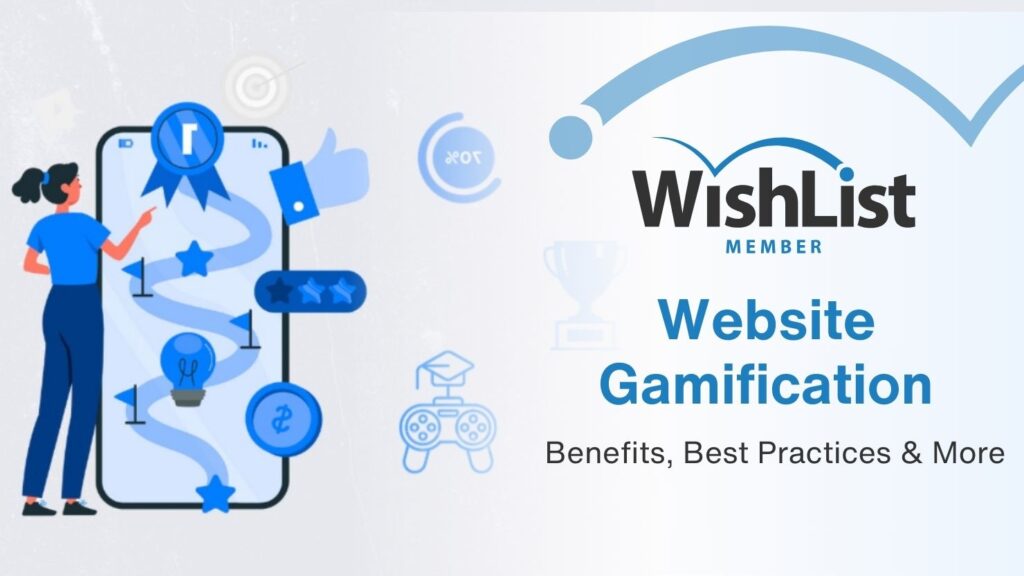




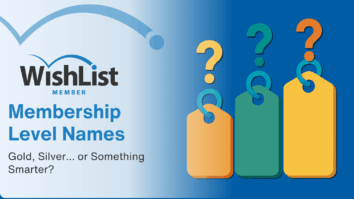

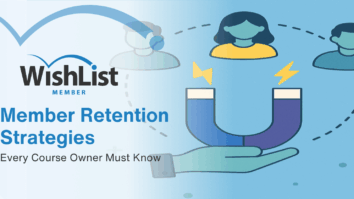
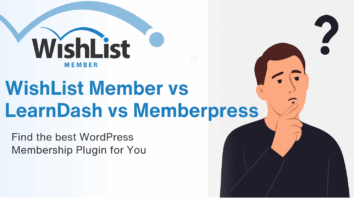


















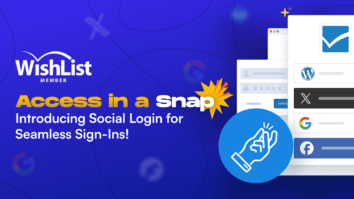
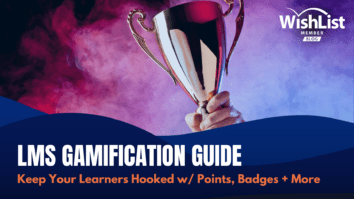










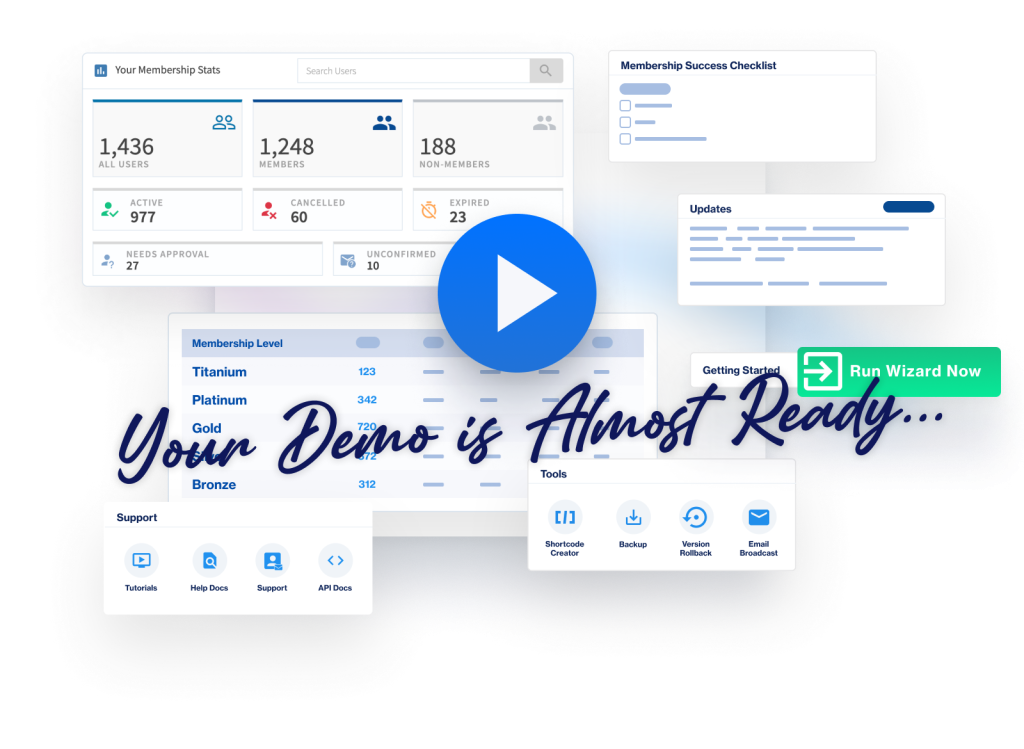
This Post Has 2 Comments
Your blog has quickly become one of my favorites. Your writing is both insightful and thought-provoking, and I always come away from your posts feeling inspired. Keep up the phenomenal work!
hi